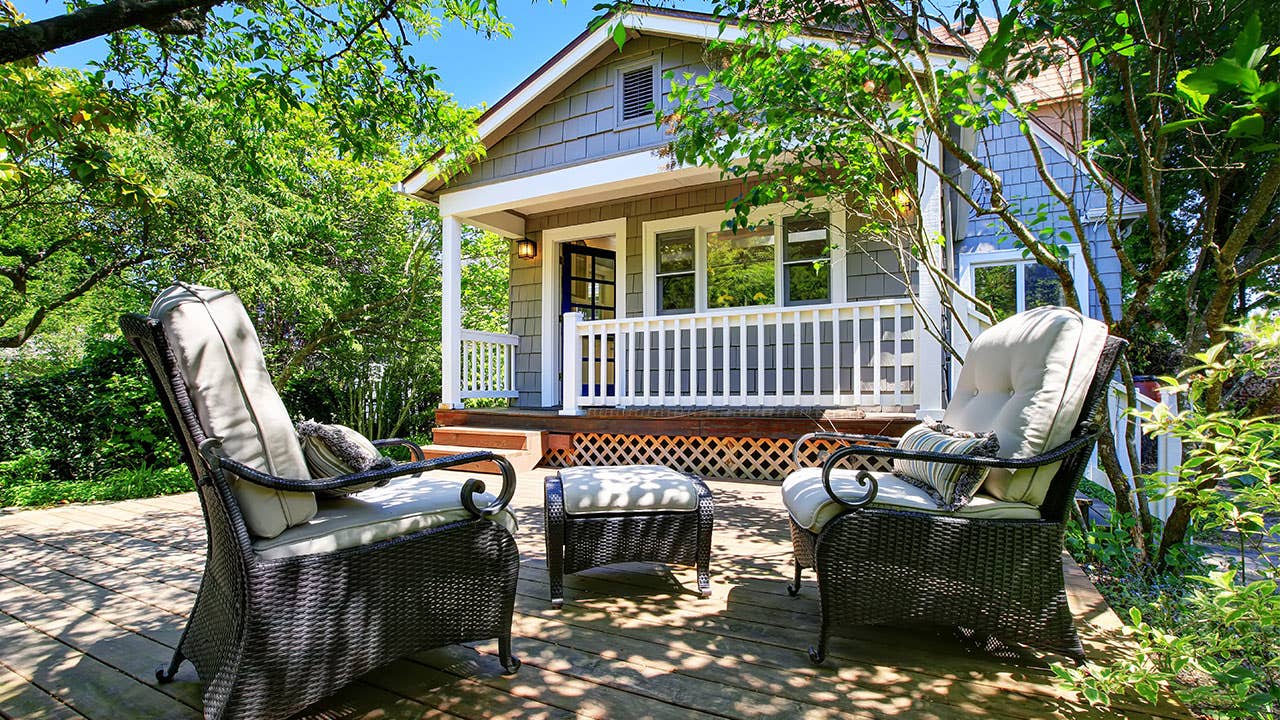
A home equity credit line, or HELOC, is really a revolving line of credit secured through the equity in your house. For those who have extra equity in your house, you are able to borrow against that to fund home improvements or any other investments that you like.
Because HELOCs are secured from your home, they sometimes offer lower rates of interest than other forms of borrowing. You may also make an application for an interest-only repayment schedule when opening a HELOC, which means that for that first several years you simply have to pay interest on the money borrowed and never the main.
This repayment approach could make borrowing much more affordable initially, but lenders typically have special requirements to qualify for an interest-only HELOC and it’s important to know very well what you’re signing on for.
What is an interest-only HELOC?
An interest-only HELOC is really a home equity credit line having a repayment structure that requires only paying the accrued interest on the money you’ve borrowed during the initial loan period. This interest-only period is known as the draw period — you’re free to take funds in the line of credit and just make interest-only payments in return.
The interest-only period doesn’t last forever though. When the draw period ends, the borrowed funds payment amortizes within the remaining loan term. The minimum monthly payment then includes principal and interest, and the payments are large enough to pay for the rest of the interest and remove the loan after the borrowed funds term.
For example, for those who have an interest-only home equity line of credit having a 20-year term along with a 10-year draw, then the loan becomes self-amortizing after 10 years. Over the remaining 10-year payment term, you can no more draw against the line of credit.
When does an interest-only HELOC seem sensible?
An interest-only HELOC won’t seem sensible in some situations and may be also a risky decision if you're not financially ready for the repayment structure. Here are a few of the scenarios in which an interest-only HELOC may not be best for you.
Limited home equity
If you don’t possess a large amount of equity in your house, it won’t be an option for you personally. Any kind of HELOC is primarily determined by your home’s equity. Percentages vary by lender, but many will only let you borrow as much as 80 or 90 percent of the home’s value.
Low credit score
Another reason to prevent an interest-only HELOC is if your credit rating is low. You might still be able to get a house equity line of credit with less than perfect credit, however the rates of interest is going to be higher. This means that you’ll need to pay hundreds otherwise thousands of dollars more over the course of the borrowed funds.
Repayment concerns
You also needs to avoid an interest-only HELOC if you aren’t confident you can make larger payments when the payment term arrives or if the interest rate — that is variable — rises. Understand how long your loan’s draw period is making plans for how you’ll continue paying down the HELOC once your monthly payment increases. This can be many years down the line, depending on the terms of your HELOC, and requires careful financial planning.
When in the event you avoid taking out an interest-only HELOC?
An interest-only HELOC won’t seem sensible in certain situations. Should you don’t possess a lot of equity in your home, it won’t be a choice for you personally. Any type of HELOC is usually dependent on your home’s equity. Percentages vary by lender, but many will only let you borrow as much as 80 or 90 percent of the home’s value.
Another reason to avoid an interest-only HELOC is if your credit rating is low. You may still be capable of getting a house equity credit line with sub-standard credit, but the interest rates will be higher. Which means that you’ll need to pay hundreds otherwise thousands of dollars more during the period of the borrowed funds.
You also needs to avoid an interest-only HELOC should you aren’t confident you can make larger payments once the payment term arrives or if the interest rate — which is variable — rises. Know how long your loan’s draw period is making plans for how you’ll continue paying off the HELOC when your monthly payment increases. This can be many years down the line, depending on the relation to your HELOC, as well as careful financial planning.
What are options to an interest-only HELOC?
Not most people are comfortable getting a HELOC. In the end, failure to make the payments can lead to foreclosures on your house. Here are a few alternatives.
Home equity loan
A home loan is similar to a HELOC for the reason that you are borrowing from the equity within your house. But instead of obtaining a credit line that you can draw against and reuse as you pay it back, you get a lump sum payment. Your rate is fixed and so are your monthly payments. Rates on hel-home equity loans tend to be just a little less than they're for HELOCs.
Personal loan
You can take out an unsecured loan out of your bank or credit union or an online lender. Your credit score largely determines what your rate of interest is going to be. If you can get a loan having a low interest rate, it's really a good alternative to borrowing against your house because it doesn’t come with the risk of foreclosure. When the rate of interest on your personal loan is much higher than the speed you can get with a HELOC, a personal loan may not be a great option.
Mortgage refinance
Refinancing your mortgage replaces it with one that has a rate plan or payment terms. Your monthly payments may even go down if you’re able to secure a lesser interest rate. Just keep in mind that you’ll be extending the number of years you spend a home loan. A home loan refinance usually won’t enable you to get anything upfront but can provide you with more money each month.
Cash-out refinance loan
You can wipe out your present mortgage with an entirely brand new one. Your new mortgage is going to be higher than the total amount on your current mortgage, and you’ll receive the improvement in cash. This can be a good option if you’re looking to get a lump sum of cash upfront. And if you’re refinancing with a lower rate of interest, your monthly payments may not even increase.
What should I do when my HELOC draw period ends?
During the initial draw duration of an interest-only HELOC, your monthly payments are relatively low because you’re only paying interest. When your HELOC draw period ends, you’ll be asked to start paying down the main too. This means that your monthly payments goes up, possibly significantly. Here’s a step-by-step guide for which to do whenever your HELOC draw period ends:
- Before your draw period ends, be vigilant about how much cash you withdraw out of your HELOC. As there is no set amount borrowed, it can be easy to withdraw more than you’re expecting. Being attentive to the number you borrow can help keep the principal (and for that reason your monthly payments) lower.
- A couple of months before your HELOC draw period ends, look at the balance in your credit line. Determine about how exactly much your monthly obligations is going to be and how you’ll have to adjust your budget to take into account that.
- Once your draw period ends, update your monthly payment to the new amount.
- If the new (higher) payment per month is really a financial burden, it’s better to get in touch with your lender than to stop making payments. Your lender may offer options like enhancing the amortization length, which will lower the payment per month.
- Besides talking with your lender, you've got a hardly any other options if the higher payment per month is really a burden. You could consider refinancing your mortgage, obtaining a personal bank loan or getting cash out from your home equity.
The bottom line
As a home equity credit line that only requires paying interest throughout the draw period, an interest-only HELOC could make borrowing less expensive initially. But remember, those minimal payments don’t last forever. Once the draw period ends, you will be responsible for repaying principal and interest. Before proceeding, make sure your financial allowance can hold this type of repayment plan.








